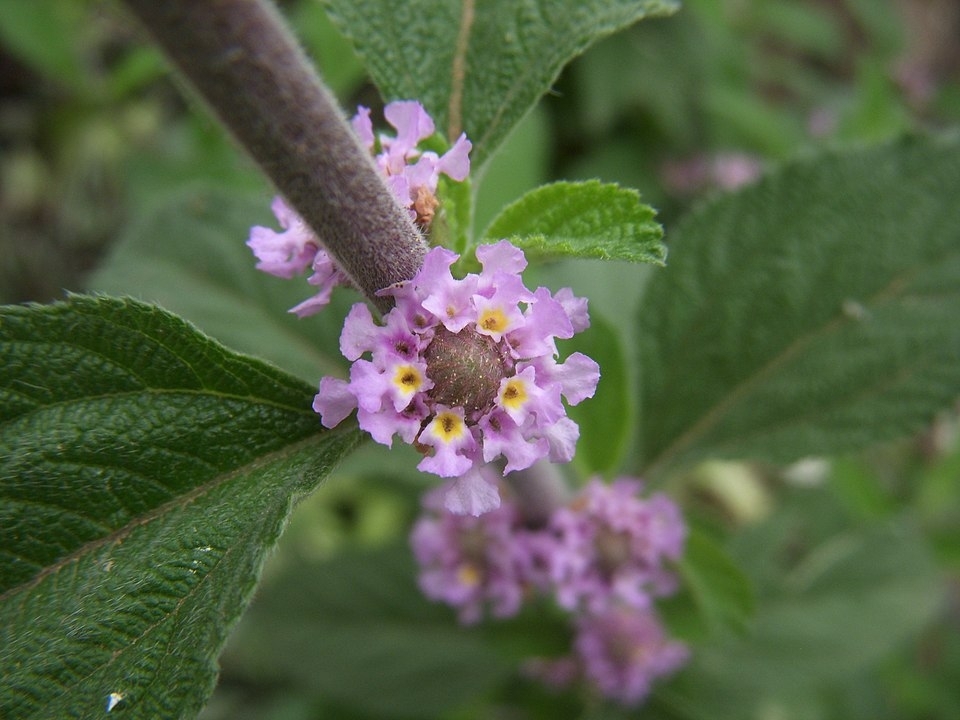


Agreement between São Paulo State University and American Chemical Society facilitates the compilation of information dispersed across more than 30,000 scientific articles (Lippie alba is one of the species found in the database / photo: Wikimedia Commons)
Published on 05/04/2021
By Maria Fernanda Ziegler | Agência FAPESP – More than 54,000 compounds derived from natural products that are part of Brazilian biodiversity are being compiled in a database containing systematized information on their occurrence and chemical structure, as well as a list of published articles.
The initiative resulted from an agreement between São Paulo State University’s Chemistry Institute (IQ-UNESP) at Araraquara, Brazil, and the Chemical Abstracts Service (CAS), a division of the American Chemical Society (ACS).
Using information contained in more than 30,000 articles published in scientific journals, a total of 51,973 compounds from native plants in Brazil was compiled. In addition, 2,219 other compounds are being systematized in the database of UNESP’s Center for Natural Product Bioassays, Biosynthesis and Ecophysiology (NuBBE).
Work on compiling the database began six years ago and is led by researcher Marilia Valli, under the supervision of Vanderlan Bolzani, principal investigator for the National Science and Technology Institute (INCT) on Biodiversity and Natural Products, one of the INCTs supported by FAPESP in São Paulo State in partnership with the National Council for Scientific and Technological Development (CNPq), an agency of the Brazilian government.
“The agreement will enable the creation of the first certified database containing information on natural products belonging to Brazilian biodiversity. Having this information organized in a broad database open to the scientific community is extremely important, as it will facilitate the work of researchers and the creation of new chemical or medicinal products,” said Bolzani, a full professor at IQ-UNESP and a member of FAPESP’s Board of Trustees, to Agência FAPESP.
The initiative will result in the compilation of substances isolated from Brazilian biodiversity and identified by the nation’s laboratories in a single database. “We’ll be able to view everything that’s been collected in Brazil in an organized manner. This is most important both for academics and for private enterprise,” said Bolzani, who is also a member of the Steering Committee for the FAPESP Research Program on Biodiversity Characterization, Conservation, Restoration and Sustainable Use (BIOTA-FAPESP).
The CAS’s large staff dedicated to the creation of the database selected information from a list of scientific articles prepared by the NuBBe team, including bibliographic references and data on all molecules. They also generated files for transferring the data to the NuBBE Database.
Users can search the database by entering the product name, properties, structure, and so on. The system then returns all the data available in the scientific literature in an organized fashion.
“What makes this agreement unique is that the CAS is licensing [donating] the data to the NuBBE Database, which is open to the public, so it will be even more accessible,” said Denise Ferreira, CAS manager in Brazil.
According to Ferreira, the CAS’s experience in selecting and curating data on chemicals will ensure that the database contains more details on the products. The donation is unprecedented, as the CAS usually charges for access to its databases.
“The donation is to support Brazilian science following the fire that destroyed the National Museum in Rio de Janeiro in 2018,” she said.
Some 30% of the planet’s species inhabit Brazil. This rich biodiversity means that Brazil has a great potential to create knowledge and value-added products, including natural remedies and derivatives, as well as food supplements, cosmetics, and materials for crop pest and parasite control.
Bolzani also stressed the system’s importance for public policy formulation. “Thanks to this database, it will be possible to see that research tends to focus on the same species and that the diversity to be studied is vast,” she said.
The idea of creating the database came to her when she was participating in a scientific conference in China in 2005. “I was fascinated by the natural product database used in Chinese medicine, and we decided to create a robust database on Brazilian biodiversity,” she recalled.
The basis for the systematization was the NuBBE Database, created six years ago as a collaboration between UNESP’s NuBBE and the Medicinal and Computational Chemistry Laboratory (LQMC), led by Adriano D. Andricopulo at the University of São Paulo’s São Carlos Physics Institute (IFSC-USP).
“Our aim for this partnership is to grow the database sufficiently for it to represent Brazilian biodiversity,” Valli said. “We started it with data on the products discovered by our lab. Its use by other researchers motivated us to expand it to cover Brazilian biodiversity in its entirety. We contacted the CAS, which had already compiled a large proportion of the data and worked out a way of executing this project.”
Source: https://agencia.fapesp.br/32314